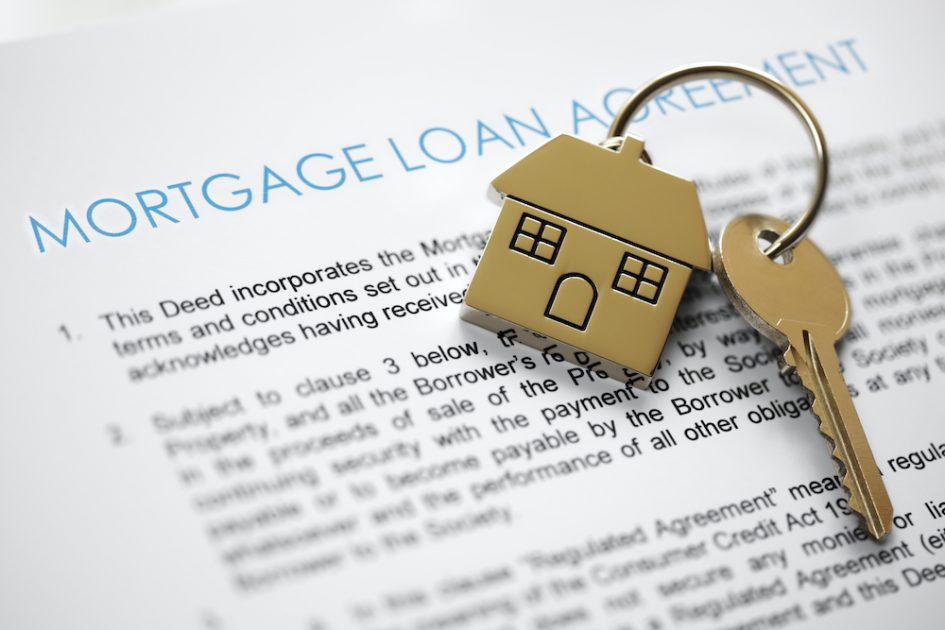10/1 ARM Mortgage Rates: How Do I Get The Best Value?
When mortgage rates are high, a fixed mortgage may make buying a house more expensive. To counter this, you can opt for an adjustable-rate mortgage (ARM) instead. An ARM allows you to lock in a lower rate in the first several years, allowing you to save money early in the life of the loan.
In this guide, we’ll explain 10/1 adjustable-rate mortgages. We’ll discuss the basics of ARMs, as well as the benefits and caveats of a 10/1 ARM. We also provide tools to estimate 10/1 ARM rates using your zip code and financial information. Additionally, this guide includes insider access to the most current mortgage rate information.

Adjustable-Rate Mortgage Basics
An adjustable-rate mortgage is a type of home loan that comes with interest rates that are subject to change periodically. Due to the adjusting rate, your monthly payment amount may differ from year to year. Most ARMs feature an initial 10-year fixed-rate period before the adjustable phase starts. This period is sometimes called an introduction period or teaser rate.
The introductory period of fixed interest and how frequently an ARM adjusts is usually expressed in the loan’s title. For example, a 10/1 ARM (sometimes called a 10-year ARM) means that the loan’s rate is fixed for the first 10 years and will readjust every year afterward.
Your interest rate is usually determined by a certain index, like the London Interbank Offered Rate (LIBOR) or the Secured Overnight Financing Rate (SOFR). What index your ARM uses will be stated on your loan documents.
Lenders will adjust your rate according to the current index rate as well as the previously agreed-upon margin that your loan has. For example, if your loan has a 3% margin and the index rate in 2020 is 1.25%, your interest rate will be 4.25%. If in 2021 the index rises to 1.50%, your interest rate will be 4.50%.
Benefits Of A 10/1 ARM
In this section, we’ll cover the main benefits of 10-year ARM loans.
Longer Period Of Fixed Interest
Compared to its counterparts like the 5/1 or 7/1 ARM, 10/1 ARMs offer a longer fixed-rate period – this means that you’ll get stable monthly payments during the initial 10-year period. This allows you to save up more money in preparation for the eventual adjustable phase where your payments will be less predictable. By saving up, you can also build a cash reserve in case of emergency expenses.
Lower Rate Compared To A Fixed-Rate Mortgage
Because 10/1 ARMs have a longer fixed-rate period, you can benefit longer from the lower rate compared to a fixed-rate loan. Lenders are more willing to give you a lower rate on an ARM because they have a chance to gain more money from interest payments when mortgage rates rise.
A lower interest rate also means that you’ll be paying more of your loan principal monthly. This allows you to build home equity on your property quicker, which may allow you to leverage it earlier.
If you’d like to lower your rate even further, improve your credit score before submitting your mortgage application or consider paying more down payment than the typical 20% required.
Your Rate Is Controlled By Caps
To control your monthly payments, lenders usually place caps on your ARM loans. These caps limit the increase in your interest rate and monthly payments, so they can stay relatively affordable even if the index rates fluctuate considerably.
Generally, a lender will place a cap on how much your interest rate adjusts every year, as well as a ceiling on your monthly payment amounts so it doesn’t become prohibitively expensive due to drastic rate changes.

Caveats Of A 10/1 ARM
10-year ARM loans feature many benefits, but they also come with some caveats. In this section, we’ll break down the three things that you should keep in mind when applying for a 10/1 ARM.
Unpredictable Interest Rate And Annual Percentage Rate (APR)
One of the most important things to keep in mind when you have an ARM is its unpredictability. Because an ARM adjusts its interest rate according to an index’s performance, you may not be able to predict your rate adjustments. You can pay a certain amount one year and have your monthly installments become more expensive the next. Due to this unpredictability, you may not be able to plan out your long-term expenses reliably.
The unpredictability of your mortgage interest rate, APR, and monthly payments also puts you at some risk if the rate rises to a level where you can’t reliably pay installments every month. You may risk stretching your finances too thin or even end up losing the home because you defaulted on the loan.
Higher Interest Rate Compared To Shorter ARMs
While the 10-year fixed-rate period on a 10/1 ARM gives you a longer period of stability, they often have the highest rates compared to a 7/1 or 5/1 ARM. You’ll still have stable rates for the first 10 years of the loan, but you should keep in mind that you’re starting from a higher mortgage rate when your adjustable phase starts.
Chance Of Negative Amortization
Caps are designed to prevent you from paying too much on your mortgage, but there is one condition when it could work against you. When your rates rise especially high, your mortgage payment amount may exceed the cap that your lender has set. Because you’re paying less than what you actually owe, you may suffer negative amortization, which means your loan balance may actually increase.
Getting The Most Value Out Of A 10/1 ARM
Unlike a fixed mortgage, ARMs aren’t meant for people who plan to live in the same home for the long run. This loan type is usually best taken if you plan to live in the home you bought for under 10 years, and then move out before your introductory period is over. You can later use the money gained from the property’s sale to pay off the rest of the loan.
Another method to save money using ARMs is to enjoy the lower mortgage interest rates for the first ten years and then refinance into a fixed-rate loan before your introductory period ends. By refinancing into a fixed loan, you’ll experience more stability on your mortgage expenses until your home is fully paid off.
However, you should always keep in mind to check current refinance rates before you apply to ensure that you’re saving money. You should also ensure that your lender doesn’t impose any prepayment penalties if you decide to pay off your loan before its term ends.

10/1 ARM Alternatives
If a 10-year ARM doesn’t fulfill your needs or budget, there are three main options available to you as alternatives.
Fixed-Rate Mortgages
In contrast to an ARM, a fixed-rate mortgage features constant interest rates. Once you qualify for the loan at a certain mortgage rate, you’ll have those rates until the end of the loan term. This means that your monthly payment will also be locked at a certain amount until you fully pay the loan off. They are typically offered in 15-year, 20-year, and 30-year loan terms.
While fixed loans provide you more stability and their predictability makes long-term financial planning easier, there’s also a trade-off. Fixed mortgages usually offer a higher rate and APR as well as slower home equity growth on longer-term loans.
30-Year Fixed Mortgage
If you take on a longer mortgage period like a 30-year fixed-rate mortgage, you’ll be paying much more in interest compared to a 15-year loan. While you may enjoy short-term savings due to the smaller payment amount, a 30-year mortgage will cost you more in the long run.
15-Year Fixed Mortgage
Conversely, a 15-year fixed loan will help you save in the long term due to its lower interest rates and APR, especially compared to a 30-year fixed loan. But while 15-year mortgage rates may be lower, the larger monthly payment amount may be a financial burden if you don’t make enough money to pay this cost without stretching your finances.
Shorter Introductory Period ARMs
Instead of 10/1 ARMs, you can opt for a 5/1 ARM or 7/1 ARM. These home loans with shorter introductory periods usually have lower interest rates. However, you won’t have as much time to experience the stability of fixed interest rates. If you’re looking to move out of your house or refinance earlier, a 5/1 ARM or a 7/1 ARM could allow you to save more money in the long run.
Government-Backed Loans
If you fulfill their eligibility criteria, a government-backed loan can be one of the most affordable choices for home financing. The government offers FHA loans geared for lower-to-middle-income borrowers and VA loans that are meant for military service members. These loans typically feature lower interest rates as well as a relaxed down payment and credit score requirement.
However, the low down payment and credit score requirement is typically balanced by limits on your loan amount. You’ll also be required to pay funding fees or private mortgage insurance to protect your lender in case you default on your loan.

Closing Thoughts
A 10/1 ARM loan can be a more affordable choice compared to fixed-rate mortgages. Its longer introductory period also allows you to enjoy stable mortgage payments longer. As with other types of adjustable mortgages, we recommend you either refinance your loan or sell your house before the first 10 years pass.
If you’re searching for a 10-year ARM, Wesley Mortgage, LLC is here to help! Our team of professionals can assist you in finding a 10/1 ARM that fits your needs and budget. Contact us today for more information!